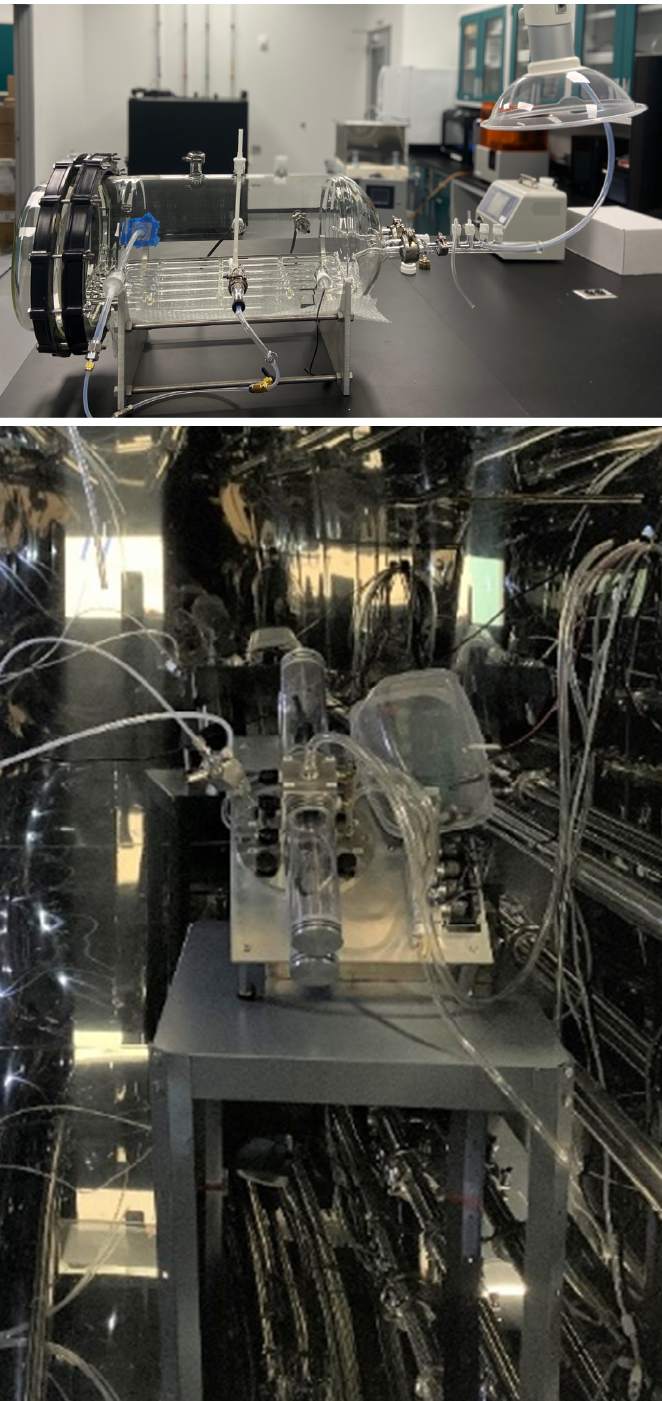Vaping: ENDS Emissions Research and Your Health
As the school year begins, the Chemical Insights Research Institute (CIRI) of UL Research Institutes shares in-depth research findings on the human health risks from vaping—especially for growing teens.
According to the 2022 National Youth Tobacco Survey, more than 2.5 million middle and high school students currently use electronic nicotine delivery systems (ENDS), bringing health risks to those vaping as well as bystanders. There is a perception that vaping is a safer alternative to cigarettes, but research shows that the use of ENDS results in exposure to numerous chemicals and small particles with associated adverse health impacts.
Here are a few key CIRI initiatives relating to understanding the health risks of vaping.

CIRI’s state-of-the-art laboratory for ENDS emissions research
Multiple factors influence chemical and particle emission profiles and health risks from vaping, underscoring the need for accurate and reproducible laboratory techniques for evaluating real-world scenarios. As featured in CIRI’s recent peer-reviewed publication, “Characterization of an Electronic Nicotine Delivery System (ENDS) Aerosol Generation Platform to Determine Exposure Risks,” our custom-designed and automated ENDS aerosol generation system (EAGS) allows researchers to simulate real-life vaping scenarios. The EAGS allows scientists to adjust voltage, puff air flows and dilution, and set custom puff profiles that specify the volume and length of time between aerosol release. Using the EAGS in our dynamic exposure chambers allows researchers to operate different types of ENDS (like vape pens, pods, and mods) and to measure particle concentrations and size distributions for different puff fractions. Studies allow a variety of flavored e-liquids, nicotine levels, and atomizer setups to be evaluated under comparable use and environmental conditions. Using the EAGS, research data show that e-liquid flavorings and nicotine levels can impact particle emissions.

(Bottom) EAGS inside the
exposure chamber
ENDS particle emissions
characterization
ENDS usage can generate high levels of particulate matter (PM). CIRI’s newest report, “Characterization of Aerosol Emissions from Electronic Nicotine Delivery Systems (ENDS),” details characterization of aerosol concentrations and particle size distributions across different vaping conditions using pen, mod-type, and pod-type vapes. ENDS usage was found to emit a range of ultrafine particles of differing sizes, and pod-type devices were found to have higher particle emission levels than mod-type devices. Inhalation of ultrafine PM from ENDS usage is a critical health concern since inhalation of airborne PM is associated with respiratory and cardiovascular diseases and premature death. Additionally, ENDS use is a concern beyond the user, as secondhand emissions could present a risk to children and other vulnerable populations when exposed to the ultrafine PM.

system (EAGS)
Over 70 different VOCs identified in ENDS emissions
The use of ENDS also generates high levels of volatile organic compounds (VOCs). This is concerning for users of ENDS and bystanders since exposure to VOCs can lead to acute and/or chronic health effects, including headaches and irritation to the eyes, throat, and respiratory system. Certain VOCs are also linked to cancer and damage to organs and the central nervous system during long term exposure. CIRI’s latest research on VOC emissions from ENDS, “Volatile Organic Compounds (VOCs) Released from Electronic Nicotine Delivery Systems (ENDS),” reports on more than 70 different VOCs in ENDS emissions, including numerous aldehydes, glycols, alcohols, fragrances, siloxanes, and aromatics. The primary VOCs emitted were associated with the number of puffs, or the mass of e-liquid consumed, although specific amounts varied across vaping device types and e-liquids.
Learn more in the technical brief, “A Strategic Research Initiative on Physiochemical and Toxicological Assessment of Electronic Nicotine Delivery System.”
ENDS usage patterns and device age can influence health risks
ENDS research shows that usage parameters and device aging can impact respiratory health risks. CIRI’s research publication, “Toxicological Assessment of Particulate and Metal Hazards Associated with Vaping Frequency and Device Age,” reports that persistent use of pod-type ENDS devices and/or device aging may contribute to additional exposure risks to aerosols and metals that can lead to cellular changes and DNA damage. Analysis identified twenty-one heavy metals known to be hazardous to human health, including vanadium, manganese, cobalt, and strontium, in aerosols emitted during the use of pod-type ENDS devices. It was also observed that the particle concentrations increased as the device aged, and that continuous use of pod-type ENDS devices may pose a greater risk of exposure to hazardous levels of toxic metals. The research findings suggest that guidance on safer ENDS use patterns may lower respiratory health risks.
Watch the Society of Toxicology’s presentation, “The Unknowns of Vaping: Oxidative Stress, Toxicity, and DNA Damage Across the Device Lifetime,” to find out more.
ENDS research expansion
CIRI recently expanded its National Institutes of Health (NIH)-funded research on early onset periodontal disease due to ENDS usage. This expansion will define the links between ENDS usage patterns and changes in oral health. Read CIRI’s two new technical briefs, “A Strategic Research Initiative for Extended Research on Periodontal Disease and Electronic Nicotine Delivery Systems (ENDS) Usage” and “A Strategic Research Initiative on African American Susceptibility to Periodontal Disease due to Electronic Nicotine Delivery Systems (ENDS) Usage,” to learn more about the research expansion.
Sharing research into human health risks from e-cigarette and vape aerosols
Our leading ongoing research into the use of ENDS, also called e-cigarettes or vapes, is characterizing airborne particulate aerosols and volatile organic compounds (VOCs) released during use to determine the exposure levels and toxicity for users and bystanders. To explore more on how these emissions impact your health, visit our E-Cigarettes and Vaping page. Keep an eye out for upcoming press releases, news alerts, and additions to our extensive Resource Library.
PUBLISHED









